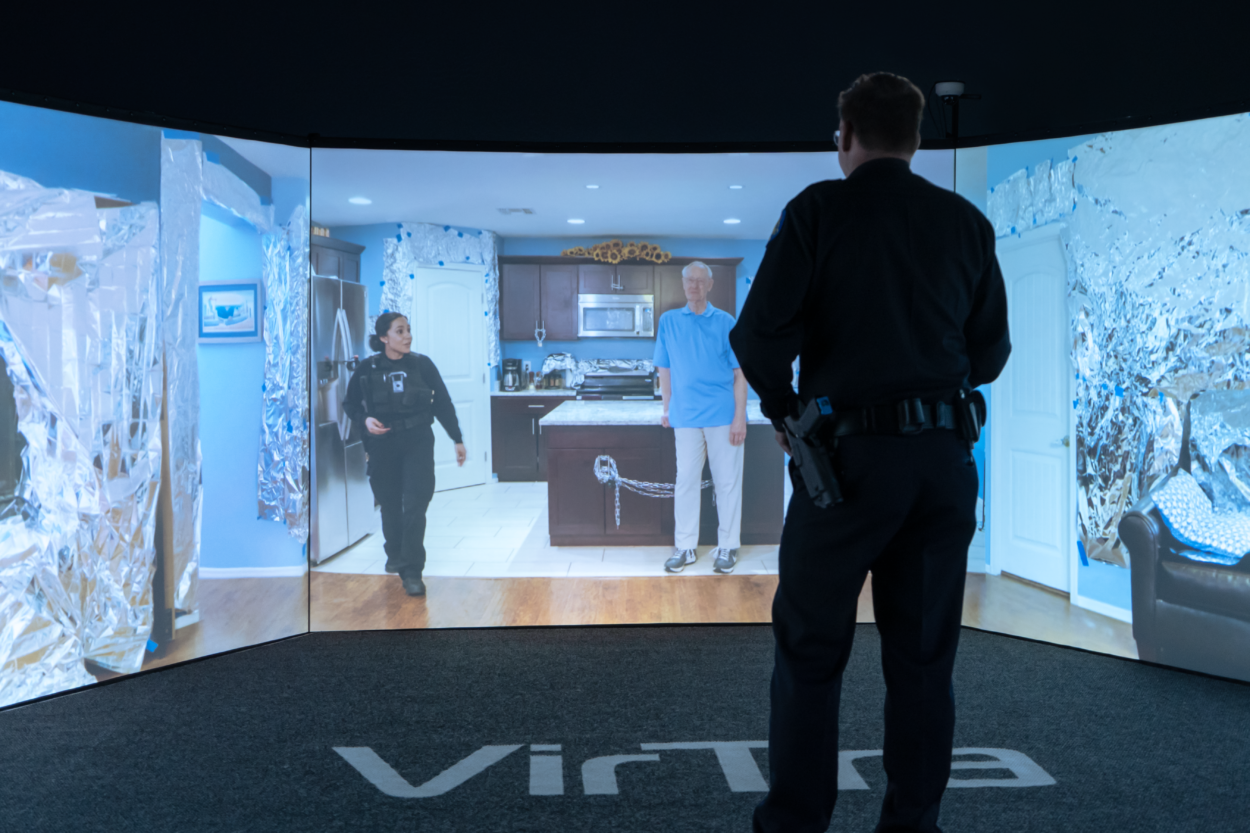Emotionally disturbed person(s) – often shortened to EDP – is a broad term often used as a buzzword. This phrase is vague enough that it can be used to describe an individual with a mental illness or someone experiencing some form of crisis. When encountering an EDP, there are proper ways for law enforcement to identify that the subject is genuinely experiencing distress and how to communicate effectively. This is best achieved by recognizing the signs and properly using law enforcement EDP training program de-escalation techniques.
An article by PoliceMag defines an emotionally disturbed person as someone “with emotional, mental, or erratic behavior that affects their decision-making process that may include hurting themselves or others.” It is vital for officers to approach these individuals cautiously and non-combatively to ensure the encounter does not escalate, an integral part of emotionally disturbed person training.
Identifying an Emotionally Disturbed Person
How Law Enforcement Officers Recognize Signs
It may seem like a simple concept – the first step during an EDP encounter involves recognizing if the individual is, in fact, “emotionally disturbed” or experiencing a mental health crisis. Sometimes information from dispatch or the reporting party may indicate to the officer that they will be encountering an EDP, allowing preparation. In other situations, police must make the judgment based on behavior patterns and physical or verbal indicators.
Law enforcement must remember that an EDP is not usually thinking rationally, but rather on an emotional and reactive level. EDPs exhibit extremes in behavior that can range from aggressive actions to suicidal behaviors. An EDP is not always violent, but has the potential to be. It is also possible that medical intervention may be needed during or after an EDP encounter, so watching for signs of distress is crucial.
Some behaviors and signs of an emotionally disturbed person include but are not limited to:
– Aggression and hostility
– Suicidal thoughts and behavior
– Anxiety
– Irrational and impulsive
– In some cases, violence
How Police Officers Make Contact with Emotionally Disturbed Person(s)
Safely Responding and Intervening – Emotionally Disturbed Person Training
In situations where a person is mentally ill and experiencing a crisis, the last thing a law enforcement officer wants to do is escalate the situation. VirTra’s law enforcement EDP training program equips police with the skills and knowledge to protect themselves, the subject(s) and anyone else nearby or involved by responding in a manner that will lower the risk of harm.
While law enforcement members are not doctors and cannot diagnose or treat mental illness, there are simple tips to diffuse and intervene situations by creating a calmer environment for an EDP.
– Limit stimulation. This may include turning off lights and sirens and moving the subject to a quieter location.
– If there is a family member or friend that has a positive relationship with the subject, involving them in the encounter may provide comfort. They also may know how to calm the subject.
– Let the person vent. Their energy needs to go somewhere, and once it is expended, they may be able to regain control of their emotions.
– Ignore any personal verbal attacks. Getting angry or arguing back will only escalate the situation and allow the individual to continue the behavior.
– Express empathy. When speaking, do not dismiss them or make them feel like what they are experiencing is not real.
Remember, the goal of the law enforcement EDP training program is to maintain safety by de-escalating and preventing the situation from becoming an emergency. By communicating properly and maintaining a calm environment, there may be better chances of coming to a sound resolution.
How VirTra Can Help with Police EDP Training
Law Enforcement Simulator EDP Training Scenarios
VirTra has numerous scenarios and curricula that provide officers with experience in dealing with EDPs in a safe environment. This method of practice allows trainees and experienced officers alike to hone their communication skills while the instructor can debrief them on their performance.
In the EDP training program video below, the scenario “Bridge Baby” allows police to talk down a subject who is holding an infant over a bridge, threatening to drop her over the railing. Officers use verbal de-escalation skills to convince the man to put the baby down safely and surrender. Like all of VirTra’s scenarios, this emotionally disturbed person training scenario has a multitude of branching options to resolution, depending on how the trainee interacts with the on-screen characters.
In addition to “Bridge Baby” and numerous other scenarios, VirTra’s V-VICTA® curriculum provides hours of NCP-certified coursework. With police EDP training program courses such as De-Escalation, Crisis De-Escalation and Mental Illness, law enforcement members have access to valuable training points that will transfer to the field.
For more information on how VirTra can help law enforcement officers communicate with emotionally disturbed person(s), understand mental illnesses and de-escalate situations, contact a product specialist to discuss our EDP training options.






